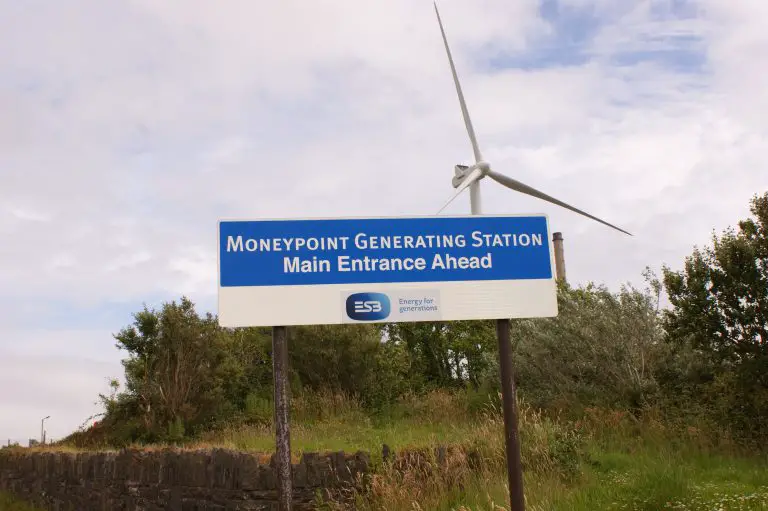*Moneypoint Power Station.
IF the 900MW Moneypoint coal-burning power station doesn’t convert to Heavy Fuel Oil (HFO) to produce electricity, “it is possible that extended power outages could occur to cover the Winter peaks in the period 2024 to 2029”.
That is the stark warning contained in a new ESB Strategic Infrastructure Development (SID) Moneypoint ‘Security of Supply’ application lodged with An Bord Pleanála seeking to convert Moneypoint from a coal-burning power generating station to one powered by HFO for the years 2024 to 2029.
Consultants for the ESB, Mott MacDonald state that if the proposed conversion does not occur “this would have a significant adverse effect, in terms of energy requirements and supply on the island of Ireland”.
The planning application includes the construction of two HFO tanks each with a capacity of 25,000 tonnes and the construction phase will result in the creation of 90 to 100 jobs. The EIS shows that a Moneypoint conversion to gas was ruled out after the conversion of the three Moneypoint coal units to gas would take five years to design and build.
The EIS states that the costs associated with a conversion to gas included an estimated €150 million on a 21km gas pipeline and an additional €90 million to convert the three coal units to gas. The conversion to gas “has the potential to much greater and more complex environmental impacts than the planned HFO conversion.
Asked to provide the costs of the HFO Moneypoint conversion, a spokesman for the ESB said that the ESB “is not in a position to comment on matters relating to commercial contracts on this project”.
Figures provided in the extensive documentation lodged with An Bord Pleanála show that Moneypoint will continue to be a significant contributor from within the energy sector to greenhouse gas emissions after the conversion from coal to HFO.
In the Environmental Impact Statement (EIS)’s chapter on the impact on climate lodged with the application, it concedes that “emissions from the operation of the proposed development are expected to be major adverse and significant”.
The EIS states that the proposed development “has a 12% lower emissions intensity than the existing coal-fired plant and presents lower emissions through transition to HFO than a ‘do nothing’ scenario with continued use of coal”.
On the proposed development’s impact on climate, the EIS states that the proposed development annual emissions “would be approximately 39-46 per cent of total projected Irish energy sector annual emissions if operating in 2030”.
The EIS states that a HFO operated Moneypoint is estimated to account for 4-5% of projected national emissions across all sectors in 2030, which is the closest projection available.
The EIS also state that the HFO operated Moneypoint is to operate “with limited run hours from late 2024 until the end of 2029”.
The 489 page EIS compiled by consultants Mott MacDonald states that the proposed development “will act as an out of market generator of last resort and will operate only when required by EirGrid for security of supply reasons”.
Mott MacDonald state that the project “aims to ensure that the power station remains viable as an energy generation node until 2029”.
The EIS states that currently Moneypoint “is a strategically important part of the energy generation network” and meets on average ca.12-15% of national demand.
The report states that after 2029, the ESB intends on transforming the site and redeveloping it as a hub for the offshore renewable sector as part of the ESB’s ‘Towards Zero’ Strategy.
The EIS states that the project “also aims to deliver the phasing out of fossil fuels under the Programme for Government”.
The report states that in recent years, Moneypoint has responded to national demand for electricity, particularly during unscheduled outages of other major generating stations, the Covid-19 pandemic and the prevailing energy crisis. Generating schedules are in place up to 2024, with Moneypoint anticipated to continue to play a key role meeting national electricity demands.

















